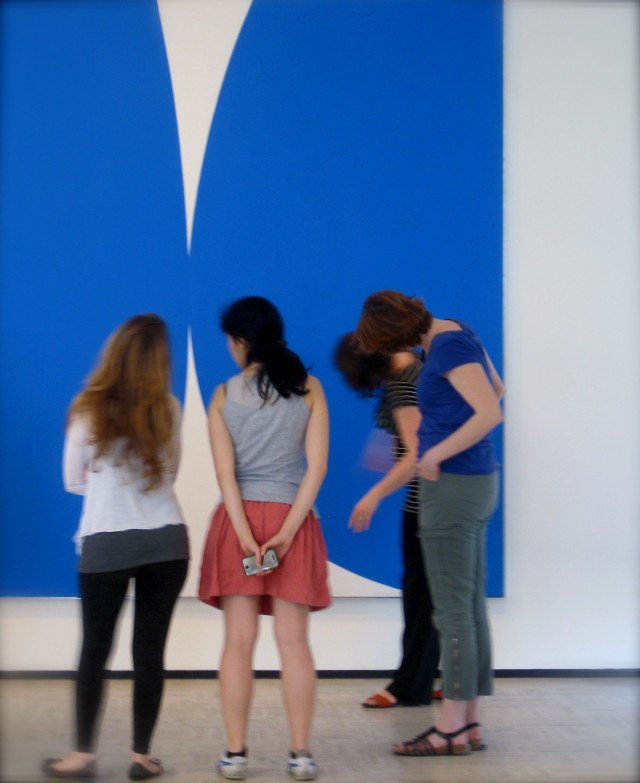Wisdom begins in wonder. –Socrates
Beginners get to have all the richness, joy and wonder. That is why they have all the luck. Beginners get to have an experience of foreignness, like travel into a uncharted territory that evades the more trained the eye. Because the unknown is a given for the beginner, it is not something from which to hide. Quite the contrary, an ok-ness with the unknown allows for wonder. Wonder at its purest and truest.
Medical students are full of smarts, curiosity, and motivation. They know a whole lot about a lot of things, and they are lightningspeed at learning more. But you know what they are typically new at? Looking at art. They are, for the most part, what arts learning experts would call beginner viewers. In being art novices, with no career-driven pressure to be art experts, they are allowed to revel in their beginnerness in the context of exploring art. They are allowed that fully rich experience, too often denied to novices by academic convention: that of foreign wonder.
Being a beginner viewer presents an opportunity for the medical student to learn essential skills for the enormous task of learning to care for ill people. Not only is that task slippery and difficult and only learned through practice trying very new things, it is the work of serious self-examination and thus unique to every one individual, it is something that their schooling neither prepared nor conditioned them for. In fact, their schooling, which they most likely aced, prepared and conditioned them to do the opposite: find a right answer, master a subject area, close it, move on.
Expertise in providing care requires much more than that. Expert care providers must: develop rapport with another person, hear what he or she is saying (and trying to say), elicit the appropriate information perceptually, and sort through an overwhelming amount of complex, ambiguous information. This requires transcending all kinds of boundaries: overcoming feelings of discomfort, fear, or downright rudeness in talking about taboo subjects. It requires the clarity, creativity and improvisation of being able to craft the right questions – not from a script, but in the moment. It requires being able to stay calm and cognitively organized in a crisis (either someone else’s, one’s own, or a shared but separate version), and allow for the time and space to nourish and care for oneself. It requires working effectively on teams– often in the context of high-stakes decisions, extremely limited time, and in entrenched, hierarchical work cultures. It is really hard – and it takes a lot: it knowledge and it takes skills– both in the service of curiosity. In the service of wonder. This is a big shift from what students have learned in school.
I have had the privilege of working with physicians who do this well. All of them have somehow found a way to preserve their wonder. Somehow, they express authentic curiosity (and even joy) in asking a new patient, “what’s your story?” All of them have found a way to preserve their wonder, despite very tough conditions.
What does it take to preserve wonder? It takes making space for nourishment. It takes exposure to new ways of thinking. It takes reflection. It takes making time to stretch, as well as rest, the mind. Discerning experts recognize the value of wonder and preserve it at all costs, even as they learn more and more about a territory, even as that territory loses its foreigness.
The wonder contains the questions and the answers and everything in between. This is what art museums do at their very best. Museums are resources that already exist in your very own community that are designed for practicing wonder. It is just a matter of connecting the dots.
Students at the Rose Art Museum, wondering
Photo by Sara Weininger, courtesy of the Rose Art Museum, Brandeis University.


